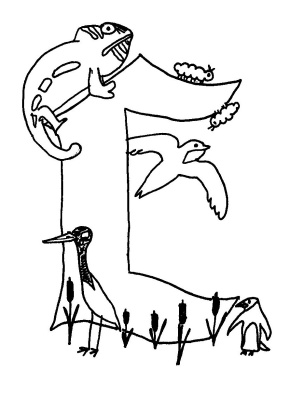Go outside and put your ear to the earth. Listen hard, like an owl, and you might hear something: a flap, rustle, or slither. If you live in a temperate climate, as we do in Maine, you are at this very moment, smack in the midst of a great thrumming biological process of which you may be largely oblivious. It’s called spring migration.
Perhaps you’ve noticed the snowbirds returning from the south. These are not birds, mind you, but people who sensibly fled the frost and are now coming back with a fantastic host of other creatures who turned tail before the ice last fall.
As these folks drive north on Highway 95 from the likes of Snead’s Ferry and Folly Beach, they are accompanied by a rainbow of purple martins, orange orioles, and yellow warblers arcing above them. Through the months of May and June swarms of fish charge in from the sea, clear glass eels climb through the weeds around the dams, and horseshoe crabs soldier out of the deeps.
As do we all, I relish spring’s explosion of plant growth. But the plants have been sitting in the same spot all winter. There is something entirely different about the astonishing influx of life that comes with migration.
It’s usually my birding friends who alert me that spring migration is underway. Although I pride myself on my ability to distinguish a scarlet tanager from, say a blue jay (not a difficult feat, as you might imagine), every year I’m startled by an offhand comment, such as, “Oh look, the warblers are back!” “Back?” I think to myself. Oh, yes, they’re migratory, aren’t they?
I’m once again reminded of how disconnected we are from the critical processes running the planet. Only a species as free from the constraints of eating locally as are modern humans, could be unaware of the surge of protein spring migration brings into our neighborhoods. We no longer need to stand hungrily by the river banks, nets in hand, waiting for the first fish to arrive. We just go to the market.
This year, in an effort to make sure all the migratory drama didn’t pass me by unnoticed, I had to resort to listing on my calendar the approximate arrival times of a few key species.
First in line were the horseshoe crabs. These ancient creatures make an annual landward migration to spawn under just the circumstances in which you might take out your silver basin and whip up a potion to get rid of warts. That is, they show up en masse on certain favored beaches in late May, at high tide, under a full or new moon.
Fortunately not all of them wait for the middle of the night and that is why I stumbled across them during an afternoon outing to Thomas Point Beach several years ago. Last week, right on cue, there were hundreds upon hundreds of crabs, some larger than dinner plates, snuffling into the sand to lay their eggs.
Next on the calendar was a note to trot across the street at sunset to watch the chimney swifts make their charming group nose dive into the chimney of Brunswick’s old high school. Despite having recently completed a 2,000 mile journey from the Amazon River Basin, chimney swifts fly continuously from dawn to dusk without perching.
The end of May also brings the spring running of alewives at Damariscotta Mills. They come in from the ocean to spawn in our lakes and ponds. I once read a historical account of salmon runs in Alaska that told of fish so thick you could walk across the rivers on their backs. Surely, I thought, the days in which wildlife scurried about in such outrageous abundance were long gone.
Yet the alewife run at the Mills continues to be just such a spectacle. At the peak of the run, the water is black with tens of thousands of fish and, were it allowed, you could scoop them out by the bucket-full.
That the integrity of our native habitats depends on migrations to remain healthy is made clear simply by reading the list of creatures that feed on alewives: striped bass, bluefish, weakfish, tuna, cod, haddock, halibut, American eel, rainbow- brown- and lake trout, landlocked salmon, smallmouth bass, pickerel, pike, white and yellow perch, bald eagles, osprey, great blue herons, gulls, terns, cormorants, seals, whales, otter, mink, raccoon, fox, weasel, fisher, and turtles. Alewives are also a prime food used for baiting lobster traps.
Watching all these newly arrived critters flood into the state brings life to all the words we learned from nature specials: migration, spawning, roosting, mating. Indeed, if we recognize what we are seeing, May in Maine is a nature special. These migrations are just as important as they were when our ancestors waited for spring to fill their growling stomachs.
We live in a place where the world’s biological rhythms, the seasonality of plants and creatures, are still close at hand. For myself, I’m waiting for the day when I see the first spring hummingbird and think to myself not just “there’s a hummingbird,” but rather, “the hummingbirds are back.”
